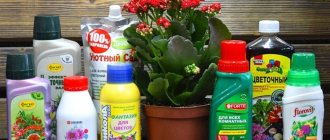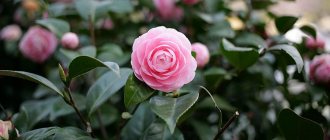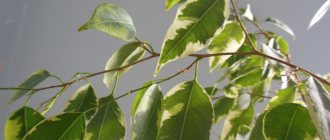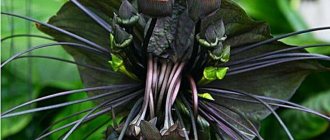Acquisition
By the way, about what else to call these flowers when searching and buying: this name for domestic violets is less familiar to us, but our same native domestic violets are still called Saintpaulia or Usambara violets.
So, the first thing a florist who plans to buy violets needs to know: these flowers are conventionally divided into industrial and varietal. Industrial violets (those that were grown in greenhouses on an industrial scale and do not have a variety of varieties) can be bought in a regular store like Leroy Merlin, OBI, etc., and varietal violets can be bought from private breeders, at specialized exhibitions, or simply from familiar flower growers. What's better?
- Experienced violet growers do not recommend buying flowers in regular stores, since often after flowering they do not take root and die. If you are a beginner, then it is safer to buy both “industrial” and varietal violets from private individuals.
Here are some tips for purchasing varietal violets:
- Having bought a violet, be sure to save the name of the variety, otherwise it will be difficult to restore it - there are too many similar hybrids. By the way, more than 25 thousand varieties of Saintpaulia are registered in the world. All of them are derived hybrids of “wild” violets and have a common name - Saintpaulia hybrida. As a rule, each flower is signed in the format: name of the breeder-creator of the variety - name of the variety.
- If you want to save a lot, buy leaves rather than mature flowers. After all, growing a violet from a leaf is very easy and the result is almost always successful.
- You can find and buy the flowers of your dreams through Instagram. Type in the search the hashtag #varietal violets and you will see many photos of violets with the names of the varieties and contacts of breeders who send plants and leaves for propagation throughout the country.
However, with proper care and a bit of luck, even discounted and diseased industrial violets (see photo below), or as violet growers lovingly call them, “soakers,” have a great chance of life.
Publication from Love. Collection of violets (@fialki_26) Sep 16, 2017 at 12:36 PDT
How to choose a violet in a store?
The abundant bloom of homemade violets in the store may distract you from the leaves, but their condition can help assess the health of the flower. Spots and dried edges are a bad sign, fleshy green leaves are a good sign. A violet with dense buds and the first opened flowers is suitable for us: it is their color and shape that you should fall in love without words, otherwise why did we start all this!
Watering methods
There are several ways to water a flower:
Upper
In this case, water is poured under the leaves. Do not allow moisture to get into the socket. If water gets on the leaves, it should be removed immediately with a dry cloth. Watering time is determined by dry soil.
Drip
The pear is filled with water and the spout is immersed in the ground. When water begins to accumulate in the pot stand, remove it. Excess moisture is drained from the stand.
In the stand
This watering method is the safest. Water is poured into the pan, and they wait until the flower absorbs the required amount of moisture. It is determined that the flower has enough moisture from the top moist layer of soil. Excess water is poured out of the pan.
Wick
Used for small pots in the warm season. A small string is inserted into the hole in the bottom of the pot. The other end is placed in a glass of water. This procedure must be carried out only in the warm season; using this method in the winter months can lead to the death of the plant.
In extreme heat, the potted plant is immersed in a bowl of water for 15 minutes. During this time, the flower will cool down and become saturated with moisture. After 15 minutes, the flower is taken out and the excess moisture is allowed to drain for a while, then returned to its place.
Once a month, during watering, the soil should be acidified. To do this, dilute a teaspoon of apple cider vinegar or 5 crystals of citric acid in a liter of water. The water should be at room temperature. Too hot or cold will have a detrimental effect on the root system.
Flower propagation
Planting seeds
Violets can be propagated by seeds. Before sowing, they are treated with a solution of “Zircon ” or “Epin” . At the end of spring, the seeds are sown in warm, fertile soil, where the groundwater lies quite deep. The ideal option for the soil is a mixture of loamy soil with humus . You can mix humus equally with peat and add sand.
The seeds should be scattered into the grooves (50 seeds per meter is enough). Experienced gardeners sow 3-4 seeds per hole, at a distance of 60 cm . The seeds are buried 6 mm, sprinkled with a little soil and watered. To prevent the soil from drying out, the planting site must be sprinkled with a layer of sawdust. Viola will begin to bloom in early June. Weak shoots must be shaded from the bright sun for at least the first 10 days.
Viola seeds of different types that can be bought at a flower shop
Seeds of two-year-old violets should be sown in midsummer and cared for using the same technology. It should be planted in a permanent place at the end of summer, and covered with spruce branches for the winter. Violets will bloom next summer.
Germinating viola seeds before planting in open ground
Seedlings
Seeds are sown in containers with fertile soil. The temperature should be about 25 degrees . When the seedlings sprout, the temperature can be reduced to 15 degrees .
On the third day after germination, the seedlings dive. After half a month, the grown seedlings are planted again in 6 cm increments. Seedlings are planted in the garden 8 weeks after germination.
Choose a substrate with the optimal composition
The violet must be planted in special soil intended for Saintpaulias. As a last resort, you can use a universal soil mixture. Ordinary garden soil is contraindicated for the crop, because pests can live in it, and violets are very sensitive to them.
Hormonal balance is fine: scientists explained the healing power of hugs
Lenten dessert without flour: semolina pie turns out so good you'll lick your fingers
Red and white sponge cake with coconut cream: a holiday dessert recipe
What else can they call it?
It is found all over the world. What types of violets are there? Annual and perennial. The most common:
- swamp: usually grows in swamps;
- fragrant: grows in gardens and parks, rare;
- pubescent: can be found in forests and fields;
- field: grows in fields;
- amazing: grows in oak forests.
Other names for the plant are Saintpaulia or Uzambara violet. This decorative leaf plant has a poorly developed root system. The leaves are usually green. The color of Saintpaulia flowers comes in blue, violet and purple shades, which is why it is sometimes called tricolor.
Note! To determine whether a flower has enough light, you need to examine its leaves: if they look up, then there is not enough light, respectively, if down, there is enough light.
Climbing shade-loving indoor plants
Unpretentious indoor plants that bloom all year round
Often walls are decorated and voluminous compositions are created using climbing plants and vines.
Interesting! Cultivation of hanging indoor plants is carried out in hanging plant pots, baskets, flowerpots, and pots.
Philodendron climbing
He does not like direct sunlight or strong shading. It is better to place it in diffused bright light or in a semi-shaded place. Moisturize weakly in winter, actively and generously in summer.
Tradescantia
There is a variety of species of ampelous plants, which differ in the colors of the leaf plates. Purple or green lance-shaped foliage with silver or pale green stripes, sometimes pubescent.
Indirect bright illumination or partial shade helps maintain decorativeness.
A resident of the American continent is rarely seen in public places. She has been unfairly forgotten. Among the advantages of a herbaceous perennial, absolute unpretentiousness is considered. The main thing is sufficient moisture.
Tradescantia – guest from America
The plant looks elegant in a flowerpot. It is used not only as a hanging crop, but also as a ground cover crop.
Cissus
Just right to decorate a volumetric plane. Numerous varieties allow you to dream up and experiment - the leaves can be small and large, tender and leathery, dissected and whole. Cissus grows quickly and decorates the room.
Indoor cissus
How does a lack or excess of light affect the growth and development of a plant?
Whether violets need light, they themselves will tell you with their appearance:
- if the young leaves develop well and the flower stalks rise above the rosette, then the violet has enough light ;
- elongated petioles, too thin leaf blade, leaves pointing upward, the violet stops growing and blooming - a sign of insufficient light ;
With a lack of light, the leaves begin to stretch.
- in good light, the leaves of variegated varieties are brightly colored;
- the leaves fall down, over the edges of the container, the color is light, with a yellowish tint, the petioles are shortened, the rosette is thickened - long daylight hours (more than 14 hours);
- short peduncles, pale color and smaller flowers, short flowering period - excess light.
Top dressing
Violets begin to be fed during the flowering period. Finish when it enters a state of rest. Fertilize it with liquid complexes for indoor plants. Fertilizers are added to the water for bottom irrigation. The concentration of fertilizing should be two times lower than indicated in the instructions.
Young plants are fed with fertilizers containing nitrogen. This will speed up the growth of green mass and help the violet to form a rosette correctly. A plant ready for flowering is fed with phosphorus and potassium.
Fertilizing is used no more than twice a month. If the plant does not have enough nutrients, it will slow down and stop blooming. Feeding begins 2 months after transplantation.
Violet: advice for beginners based on personal experience
The message is hidden for easier commenting. Read message
| Comment | « Prev. entry - To the diary - Next. entry » | Pages: [1] 2 [New] |
Watering is the last thing. Important, but of all those listed the least. See if they are blowing. Do you often move them from place to place? Is everything okay with the composition of the soil? It is often over-acidified, and the violet dies. Violets REALLY love the sun (and are not actually afraid of almost direct rays). And, perhaps, this may seem insignificant to you, violets - just like few other plants - react very sharply to the psychological level of the inhabitants of the house.
I’m not writing to get smart. It turned out that three pots of violets were forcibly “sold” to me, and now I have 26 of them, and only three are repeats. 23 different varieties! The land is purchased. I water it occasionally. There is a lot of sun. There is also a lot of drainage, that’s true. People ask me for sockets for money.
Take vermiculite and mix 1:3 with soil. Violet roots love air. Drainage is also important, but it is important that the soil itself is not over-fat and, moreover, not over-acidified. And loose. Violets love the sun very much, very much.
And it is important to do rolling/transplanting only in spring/summer, and especially in autumn but not in winter. You will kill the plant.
I don’t want to challenge the author of the post, but I’ve been growing violets for more than 13 years, so much so that my friends beg, so I’ll say that direct sunlight is not scary for them, unless it’s the same rays as they were in the summer of 201. Uzumbara violets are actually unpretentious, they are not orchids.
Original message by Galina5819
When I was a child, violets always grew on my mother’s windowsill. Therefore, when I grew up, I decided to definitely plant these flowers in my house. I bought two pots of violets in the store, borrowed three leaves from friends and planted them in the ground, and my mother brought me another pot with a very beautiful violet. And now the northern window sill is overgrown with flowers, and I am filled with worries. I cared for the violet (as I thought) correctly: I watered it every day, removed the dried flowers, tore off the lower leaves so that the flower did not grow too much, groomed and cherished it and... two months later, out of six violets on my windowsill, there were only two stunted creatures left. I repeated the experiment, bought and acquired new specimens of violets until I decided to end the experiments and accept the inevitable - violets do not want to live in my house.
Features of shade-loving plants
Indoor plants and beautiful home flowers
The decorative properties of shade-tolerant indoor plants are fully manifested if:
- flowers are in partial shade or shade for half the day;
- Development is not inhibited by lighting intensity: growth does not slow down, the color of the leaf blades does not fade;
- sunlight does not cause leaf burns;
- the soil and air are sufficiently moistened;
- adhere to the temperature regime;
- Shade-loving plants are rarely replanted.
A variety of shade-loving crops allow you to create stylish flower arrangements that will decorate your premises.
Dracaena: light-loving or shade-tolerant
The tree-like culture is characterized by contrasting coloring of narrow elongated leaf blades. The variety determines the height of the dracaena - from 0.7 to 3 m. To preserve its decorative qualities, sufficient, but not extremely bright, illumination plus moderate moisture will be required.
Dracaena in the interior
Ficus: light-loving or shade-loving plant
A popular crop among flower growers, belonging to the Mulberry family, is bred with small or large foliage. Species with dark green leaves develop well in partial shade, while variegated ones like the sun. They are light-loving and heat-loving, and love high humidity. Drafts and supercooled soil are dangerous for ficus.
Violets: light-loving or shade-loving
The flower needs plenty of light, but does not tolerate direct sunlight well - burn spots form on the plates, the color becomes pale, and there is no flowering. A location in light partial shade or diffused light is just right for a violet.
The shade-tolerant plant is afraid of the heat of the sun; it feels great in the summer 3-4 m from the window. In winter, with short daylight hours, it is advisable to move Saintpaulia closer to sunlight. The culture is valued for its rich color palette. Dried flowers are immediately picked off and the temperature is maintained at least +15°C.
Kalanchoe: light-loving or shade-loving
Housewives who prefer flowering crops, but forget about watering them, will definitely choose Kalanchoe. The plant can go without water for a month, but this will negatively affect flowering.
Kalanchoe with an unusual color
Warm days in summer are preferable for the flower. It is placed on the southern windowsill, slightly shaded.
Indoor flowers that love shade and are easy to care for will fit into the interior of any home. The design provides for their location in the back of the room and the creation of green spots in the apartment. They will provide a feeling of peace and relaxation and will tolerate limited sunlight all year round. Which plants to choose depends only on the preferences of the housewife.
Viola garden
The plant belongs to the violet genus. Unlike pansies, garden viola reaches a height of 30 cm. It blooms very profusely and for a long time. Flowers perceive shade better than bright sun. In sandy soil the flowers can be very small. Water the plant as needed, but try not to water too much.
If diseases occur, gardeners recommend spraying the plant with a solution of calcium and soda.
With proper care, each of the plants can be grown indoors or in the garden. Plants that are similar to violets are usually not too demanding and can be grown even by amateur gardeners.
Shade-loving indoor plants for the hallway
What indoor plants must be in the house?
The main advantages of decorative deciduous crops include the expressive color of the foliage. The flowers are small and unattractive.
Sansevieria
Characteristic features of culture are strict lines. Among gardeners, the plant is called pike tail, mother-in-law's tongue.
One of the names of Sansevieria is snakeskin.
There is a variety of varieties available with different color variations in the color of leathery sheets. In the penumbra, the polarity of the color spots stands out. If conditions are favorable during flowering, sansevieria ejects oblong candles of white and yellow inflorescences.
In terms of undemandingness and shade tolerance, the plant can be compared with chlorophytum. The plasticity of the mother-in-law's tongue is manifested in the ability to live in bright sun and deep shade. Breeders received spotted, or variegated, varieties. However, in the shade the richness of the variegated pattern fades.
Advice. To enhance the variegation of the pattern, increase the lighting in the room.
Ferns
The variety of species of shade-loving indoor flowers allows you to choose suitable options for the office and home. A fern is ideal for the hallway; it does not bloom, but enlivens the interior with rich color. It grows well if there is a shady location, the soil and air are moist.
Fern in apartment design
Crassula (money tree)
The plant does not develop well in the shade. The fat woman feels comfortable in low light. No intensive watering required.
The money tree, like all succulents, likes light: diffused and soft sunlight. It is preferable to place the culture on the eastern windowsill. In the summer season, it doesn’t hurt to move the fat plant to a more shady corner so as not to harm the delicate leaves of the money tree.
Ficus
The delicate plant should not be exposed to direct sunlight. Like all plants, it helps purify the air and saturate it with oxygen.
Ficus prefers a lighted, ventilated space. The temperature in the summer is a maximum of +25...+30 °C, in the winter season it is +15...+20 °C.
Irrigate with heated water as needed. The culture is afraid of drafts and temperature changes. Ficus does not tolerate excess water, which can ruin it.
Additional Information. The plant is not poisonous, fights harmful microorganisms, and disinfects the air. Suitable for the bedroom: helps to conceive a child, treats female pathologies. In the treatment of uterine tumors, tea and decoctions from ficus are used. Traditional medicine recommends the plant for bronchitis.
Inconsistency is typical in the attitude towards ficus among different peoples. Some people believe that ficus brings benefits to the home. Others talk about its harm to humans. In ancient times, the Slavs believed that the flower was the cause of quarrels.
Now the attitude towards ficus has changed. Reviews about the flower are positive; it is considered a family flower, a talisman of the hearth.
Helps build relationships. The flower absorbs formaldehyde, which is produced by plastic and can be found in excess in many apartments.
Ficus benjamina - a suitable option for the bedroom
The compact plant fits perfectly into the interior of the room.
Schefflera
It is a branched bush with flexible shoots. The plant tolerates shade well, but prefers the fleshy patterned leaves to be exposed to sunlight for several hours. To improve branching, pinch the tips of the branches. Care features include:
- temperature support: +12…+20 °C;
- frequency of foliar spraying.
Compliance with agrotechnical practices guarantees the transformation of sheflera into a powerful home tree. Compact and large species have been bred.
Treatment
To cope with powdery mildew, the plant is sprayed with a solution of Fundazol or Bentlan. If the lesion is severe, then the procedure is repeated after 10 days. A plant affected by late blight cannot be cured. Therefore, to prevent its occurrence, it is necessary to regularly add superphosphate to the soil and monitor the humidity in the room. An increased level of the latter leads to flower disease.
When gray rot appears, the affected leaves must be removed and the plant itself treated with a fungicide. Small brown spots on the foliage will indicate a mite infestation. They feed on the sap of the plant, so the violet begins to wither.
The plant is treated with acaricides. Additionally, the ground is watered with Fitoverm or Aktellik. The procedure should be carried out outdoors, as these substances are dangerous to humans. You need to wear a mask and goggles on your face, and gloves on your hands. The same method is used to get rid of aphids.
What to plant in the hallway
When guests enter a house, they first find themselves in the hallway, the appearance of which largely determines the perception of the house as a whole. It is important to plant beautiful plants here that thrive in semi-dark conditions. Shade-loving house flowers for the hallway are varied.
Sansevieria
Shade-loving and shade-tolerant flowers for the garden and cottage
Also known as “mother-in-law’s tongue”, “pike tail”, “snake skin”. A very unpretentious plant, capable of competing only with chlorophytum in this indicator. It can also grow in the shade, and the leathery leaves will acquire a more saturated, deep color.
Note! If the color of the leaves of the mother-in-law's tongue has become faded, it means that it does not have enough lighting; to solve the problem, the pot is temporarily moved to the windowsill or taken out to the balcony.
Ferns
In nature, these plants prefer dark places in the roots of trees, where the rays of the sun are not able to penetrate. In addition, the proximity to mosses provides coolness and humidity.
To grow ferns indoors, it is important to maintain these conditions. Basic Rules:
- It is best to choose the variety that grows in the region where you live - it is much easier for it to restore its natural environment.
- It is necessary to constantly moisten the soil and air, so watering is carried out regularly.
Ferns are increasingly being used as houseplants, the reason being a combination of decorativeness and undemandingness.
Crassula
Also known as money tree. According to the teachings of the eastern sages, this plant is capable of introducing cash flows into the home; the main thing is to properly care for it and achieve growth.
This succulent is hardy, but does not develop well in the shade; it should be planted on the east side, creating light openwork shading with tulle.
Note! The money tree does not tolerate exposure to sunlight, which can cause burns. But soft scattered rays are useful for its growth.
Ficus
It is also important to protect it from exposure to UV rays. It grows well with a constant supply of oxygen, so the room where the ficus pot is located should be regularly ventilated.
This southern plant has been known since ancient times; for example, in one of the Egyptian tombs, archaeologists discovered a sarcophagus made from African ficus wood. The plant is generally unpretentious, but requires strict adherence to certain growing rules.
The plant needs light nutritious soil; ficus is quite light-loving, so it should be provided with diffused soft lighting. Temperature in summer is +26..+30 degrees, in winter - at least +16 degrees. Watering is moderate, carried out when the earthen clod dries out, using soft, settled liquid.
Note! Sudden temperature changes and drafts are destructive for ficus.
According to popular belief, growing ficus in the bedroom will help a woman get pregnant. However, other nationalities believe that the plant can cause disagreements between spouses.
Schefflera
It is one of the shade-loving houseplants. This is a flexible, lush bush of increased decorative value, the patterned leaves of which will decorate the hallway, living room or study.
To make the cheflera look neat, its ends should be pinched. It is grown at a temperature of +13..+21 degrees, it is important to ensure high humidity. To achieve this, regular watering and spraying are carried out.
A hardy plant, shefflera, will not create any problems when grown in the hallway or bedroom











